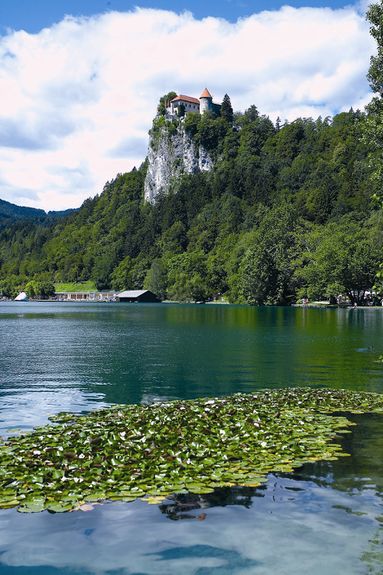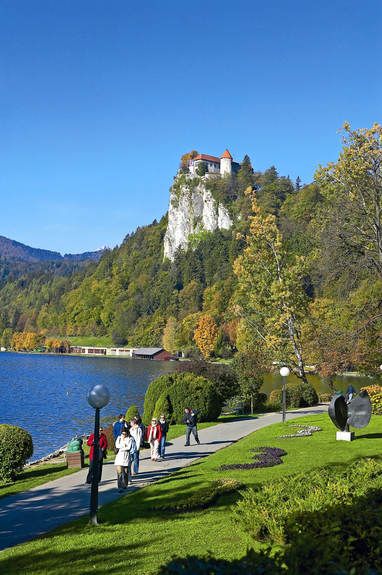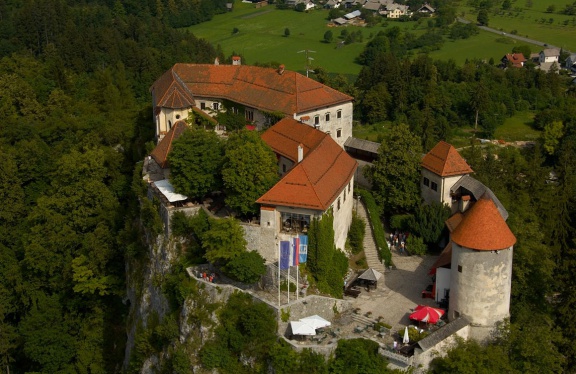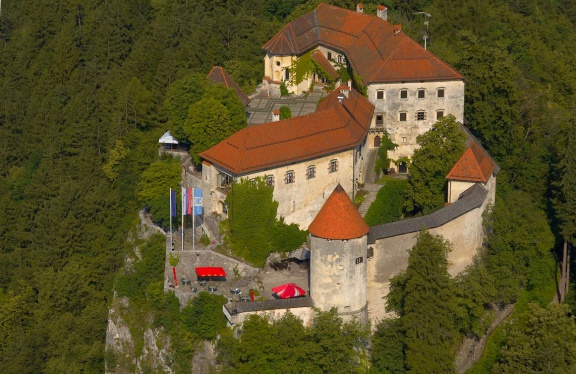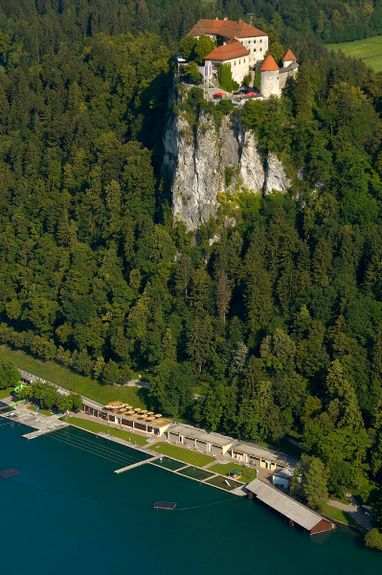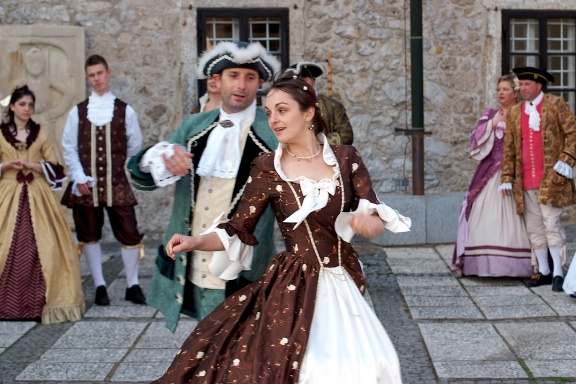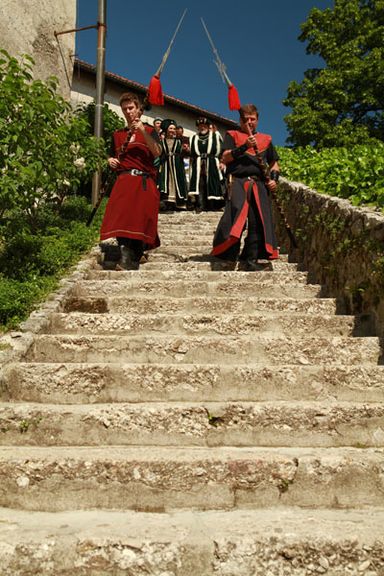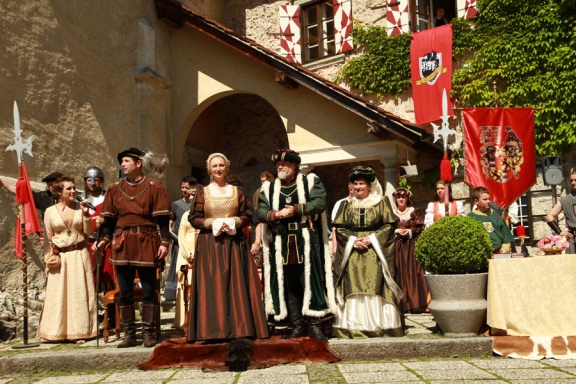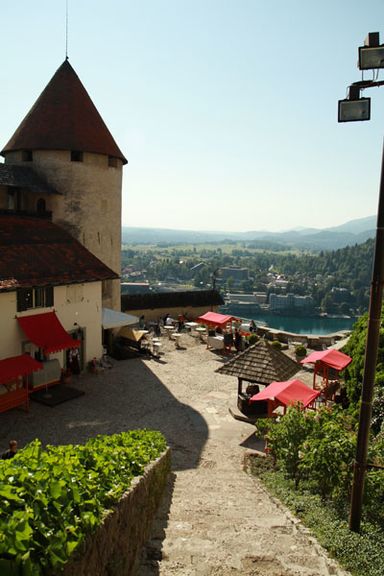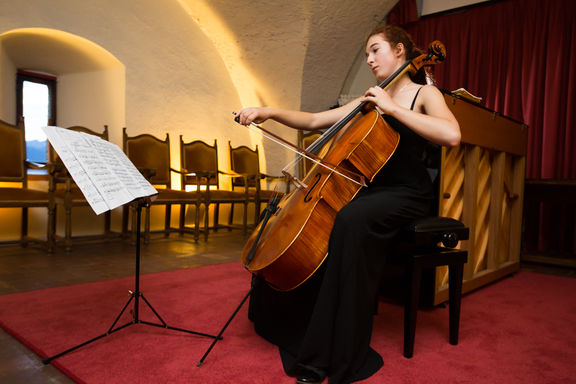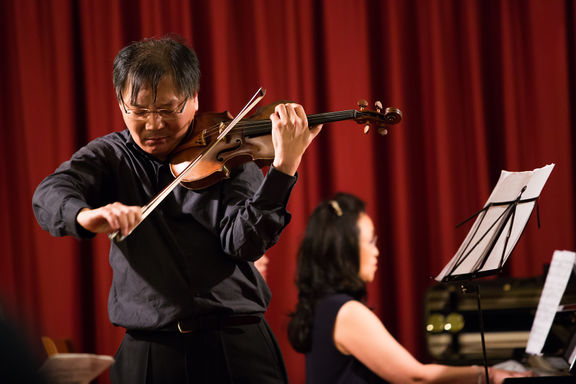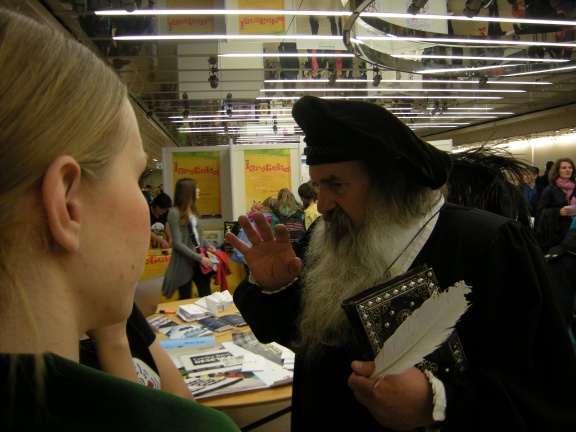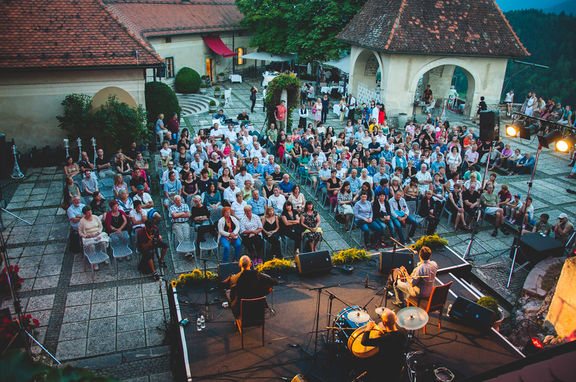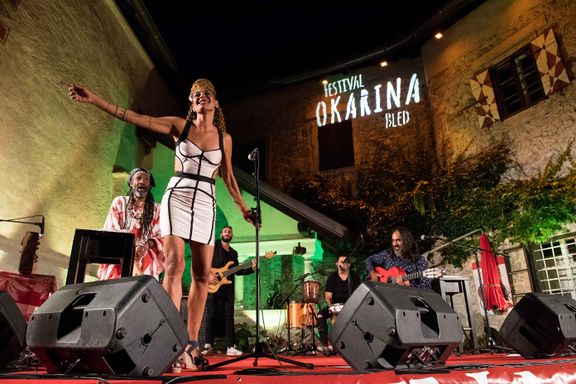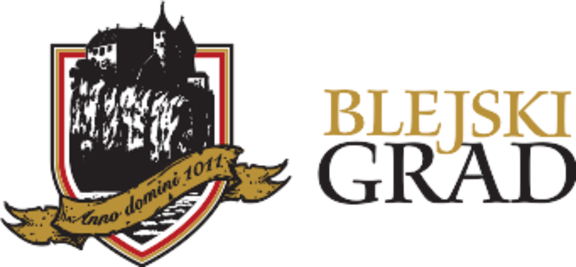Bled Castle
Premises
In 1511 the castle was badly damaged by an earthquake. The present look of the castle dates from the late-17th century and includes major restoration works carried out in the 1950s. Preserved from the original building are the Romanesque walls with an entrance tower and the reconstructed wooden defence corridors, while the other sections of the castle are generally in Gothic and Renaissance styles. Since the late-19th century the castle has changed owners many times.
Today the premises of the castle are administered by Bled Cultural Institute, which also organises various events and cultural programmes at the castle. Events ranging from Mediaeval shows, weddings, concerts, political, and corporate events take place at the castle's premises which include a restaurant, printing works, wine cellar, herbal gallery, knight's hall with multi-visions, and castle chapel.
Exhibition
The museum's permanent exhibition Bled Castle Museum Exhibition on the History of Bled and its Environs is set and maintained by the National Museum of Slovenia. In 2008 the exhibition was renewed and reopened in 14 chambers of the former residential rooms in the Baroque part of the castle.
Over some 400 original artefacts plus replicas have been assembled and present the geological, natural, general and art history of the region, as well as the archaeological and construction phases of the castle. A look into the palaeontological record reveals animations with flora and fauna of fossil remains discovered in the region.
Bled with its environs is Slovenia's best archaeologically researched area. This part of the museum exhibition shows numerous found artefacts that witness the Ice Age hunters, the first Stone Age tillers and stockbreeders, the Copper, Bronze and Iron Age settlers, inhabitants from the Roman Period and Late Antiquity, the Early Mediaeval and Early Slavic Period, when many villages and roads, still recognised today, were built. From the 11th century to the beginning of the 19th century, Bled was the seat of the Bishopric of Gorenjska.
In the 19th century Bled developed into a famous health resort thanks to the strict Swiss doctor Arnold Rikli; soon clever locals opened their own spa arrangements, where more hedonism was practised. A big copper bath with photos of people doing group body practices, sunbathing in funny pants made of cloths, villas for rich that rose around the lake are presented on first floor. The exhibition rooms are furnished with old furniture dating mainly from the 19th century.
The castle toilet in one of the exhibition spaces on the second floor most likely has the best toilet view in the world: through a small window one can see Bled Island with its church in the middle of the lake. The toilet was made in a niche that juts out of the castle wall, what is missing is a round plexiglass window that enables visitor to look through a hole into the abyss underneath. It is now unfortunately closed with a wooden lid.
See also
- Bled Cultural Institute
- Bled Festival Hall
- National Museum of Slovenia
- Hrušica - Museum Collection and Archaeological Park
- Snežnik Castle Museum
External links
- Bled Cultural Institute (in English, German, Italian and Slovenian)
- National Museum of Slovenia website (in English)
- Bled Castle on Wikipedia
- Burger.si Virtual panorama of Bled Castle
- Pictures of Bled Castle on Kraji.eu
- Museum Train on Slovene Railways web page - Transalpina Railway going through Bled



